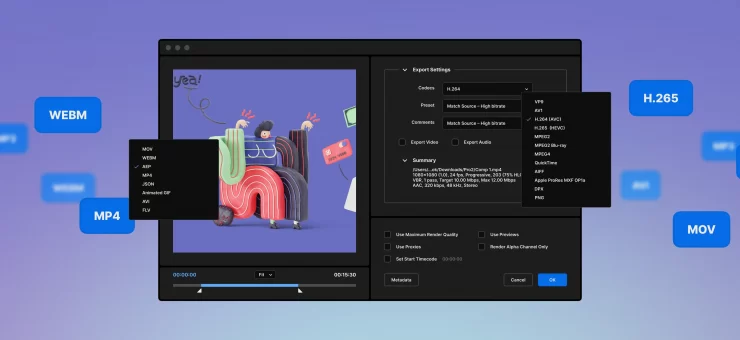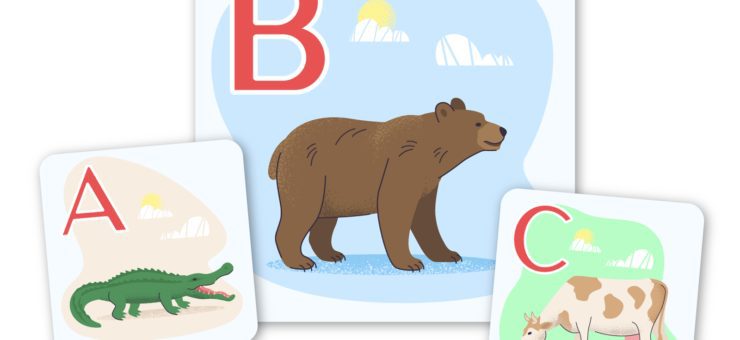Believe it or not, anything we call ‘retro’ or ‘vintage’ has an undefinable charm, be it an old cuckoo clock, Mercedes-Benz 280 SL, 50s Polka Dot Dress, or Gramophone. Digital arts are no exception, especially graphic design. Let’s gain insight into retro design and the best ways to incorporate retroism in your own design.
What is retro design?
“Retro style is a style that is imitative or consciously derivative of lifestyles, trends, or art forms from the historical past, including in music, modes, fashions, or attitudes. It may also be known as “vintage-inspired”.” (Wikipedia).
Loosely stated, retro design is a genre of “throwback” design that incorporates design elements from decades past.
The retro design also goes by the name “modern retro”, which excels at giving the viewer a feeling of nostalgia. More specifically, it tends to focus on designs from the eras of the 60s and 70s, though there are “niche” genres of retro design that are stirred by other decades, from the 20s (art deco) to the 90s (blues, pinks, mint greens, and blocky shapes in arrangements that are best described as “unconventionally attractive”).
Why is retro design in vogue?
The feeling of nostalgia is a powerful force when it comes to influencing how your design is perceived. According to Nostalgia and Its Value to Design Strategy: Some Fundamental Considerations, a paper presented at the Proceedings of the Tsinghua-DMI International Design Management Symposium, “Cognitive theorists believe that emotions have a strong influence on human behavior, that is, people will be attracted by the objects that evoke positive emotions and forced away from those things that evoke negative emotions. Nostalgia, like other positive emotions, when it is evoked by certain stimulus (e.g., products, brands), will incite people to approach (e.g., to purchase or to interact with) it.”
Emotional investment in design is a powerful force for motivating consumers to buy, investors to invest, and the audience to keep on watching, reading, or participating.
Even though the industry constantly adopts new design trends, the significance of retro design is increasing. Things that were once obsolete are now new again; old trends and designs are now brought out, dusted, and put into use, thus proving their point.
Retro design is popular with people already familiar with the style and those who are experiencing these designs for the first time now. Drawing multiple demographics (that retro designs are famous for), retro effects make it easier to engage the audience instantly and make designs recognizable and remembered for a long.
How do you execute retro design?
When it comes to retro design, there is a variety of elements to consider. This also depends on what you’re working on and the elements available, whether you design an email newsletter, blog, or any other form factor. And when you have the right elements in the right order, taking your audience down memory lane (through retro design) can go smoother.
Here are the elements you need to consider when adding a retro flair to your designs:
Element One: the throwback decade of choice
First, for obvious reasons, you need to pick the decade that you wish your viewers to reminisce about through the use of retro in design. But it is not that simple. There are tons of options to select from, and it is easy to get confused when picking a decade to ruminate. Sometimes, the 20’s design looks like a 30’s design, and certain elements that were popular or common in the 60’s might be echoed in the 80’s or 90’s. Design comes from design; inspiration begets inspiration.
So, even if you choose a deliberate historical reference, such as art deco, other elements will bleed through. Rest assured, there’s really no problem with that unless you’re a historical purist.
Here is a brief glimpse into different eras:

But it is a good idea to go with styles that mesh well with each other, rather than retro choices that clash. Don’t forget the purpose of your design: create something effective and memorable.
This is especially important when it comes to logos, which are the frontrunners for your brand and which will be the first contact for new customers.
Element Two: retro shapes
Shapes follow the decade choice in our list. The right choice of shape depends a great deal on the decade you are trying to evoke.

The 20s, for instance, tended toward Art Noveau style, with clean lines and basic geometric shapes. The 30s echoed the 20s in this regard.

By the 40s and 50s, the shapes were slightly more blurred, with hand-drawn comics-style lines.

In the context of logo design, classic choices include diamonds, both horizontal and vertical, and triangles. Both of these shapes lend themselves well to logo design. Circles are also smart choices for retro logos and can be incorporated as “frames, ” including diamonds or other shapes within.
Element Three: retro lines
It’s easy to pick out Art Deco as an example of line techniques in retro design. Art deco’s geometric shapes are often paired with lines to highlight the shapes themselves.

When using lines as separate elements in your design, you can incorporate them both parallel to the basic shapes within your logo, and perpendicular to the shapes (cutting across them) to help text and other elements stand out.
Element Four: retro textures
Art Deco is famous for using polished, mirrored, or golden metallic textures paired with black or silver. The primary effect of retro design tends to be almost overwhelming in terms of shine and sheen. Which is why, it looks very smooth and slick, as though the design was a floor that you could slide down on your socks.
Other decades of retro design may have a very different feel, however.

“Vintage” designs typically have a “lived-in” or “grunge” texture, giving the design the appearance of having been around for a while. This is an easy shorthand for making your retro design look older than it is, but it doesn’t usually pair very well with the aforementioned Art Deco style.
Element Five: retro fonts
Fonts are fun to play around with at the best of times, and investigating what style is most appropriate for your retro logo design is no exception.

Some designs, like Cheque, are clearly following the mold of art deco, with straight, classic lines based on geometric shapes.

Jocker also has a vintage look and feel, with a vibe that is perfect for a retro circus poster design.
For every decade, there is guaranteed to be a handful of fonts based on the fonts in use at the actual time. Many of them are free to use and easy to find with a simple Google search.
How to create a retro design?
So, how will you piece all your elements together?
It’s always a good idea to sketch things out ahead of time to understand what you want your finished product to look like.
Thanks to technology, there is a variety of helpful programs to use; designers can also get inspiration from tons of helpful videos available on YouTube. For example, check out this step-by-step guide to designing retro logo by LogoDesign.Net:
Here is another great resource on how to design a retro poster in Photoshop by Design Cuts:
If you’re using elements from different eras, it may take some playing around with different versions to ensure that your design meshes well and presents a coherent, effective whole.
Retrospection
Considering all of the above elements, it’s also important to remember that retro design itself is retro design. In other words, people have been doing and re-doing the same thing for decades. What about the current popularity of “vintage” design? It certainly isn’t the first time that it has happened.
With that in mind, certain elements of retro design may actually be repeated from former designs. They may have been altered to fit the then-modern sensibilities, or they may just have been copied completely. Either way, the odds are that your retro design will incorporate throwback design elements from multiple eras, whether you intend to or not.
And this does not harm.
Things that were popular in the past trended for a reason, and there’s no reason why they can’t be popular now. Retro design, even if somewhat muddled and widespread, can be just as effective and appealing now as it was back then.
About the author
This is the quest article by Ayesha Ambreen, a Creative Content Strategist, Top Author on Quora, Featured SlideShare Author, and Graphic Designer. Best known for her creative visuals and viral content ideas, Ayesha’s work has been featured on blogs such as Entrepreneur.com, LifeHacker, CreativeBloq, Hubspot and more. She holds a degree in telecommunication engineering with extensive experience in writing, outreach, strategic visuals, and search engine marketing.
Read the article about the history and present of poster design, check the hot prospects on digital illustration, and check the collection of free vector software



